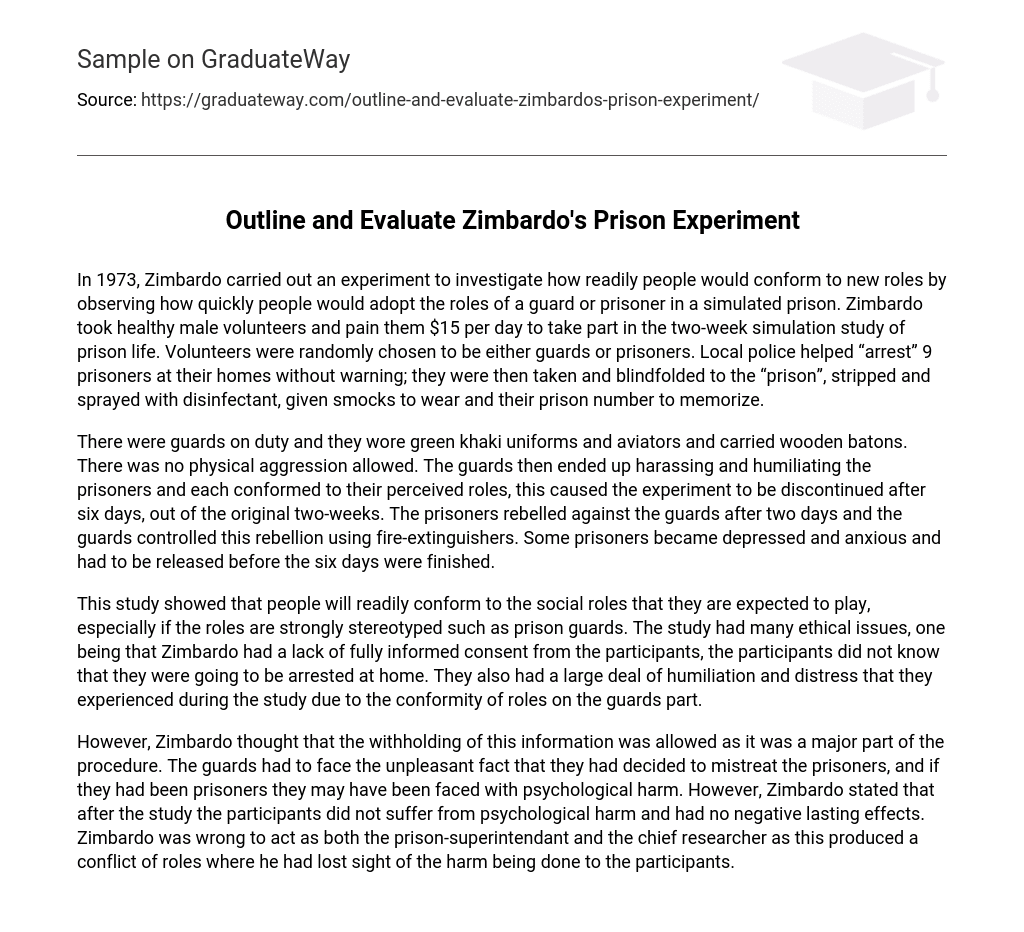Back in 1973, Zimbardo conducted an experiment to investigate how easily individuals would conform to different roles. The experiment involved observing the speed at which participants would adopt the roles of guards or prisoners within a simulated prison setting. To carry out this study, Zimbardo enlisted healthy male volunteers who were offered a payment of $15 per day for their participation in the two-week experiment. Through a random selection process, some volunteers were designated as guards while others became prisoners.
To recruit the prisoners, local police unexpectedly “arrested” nine individuals at their homes. These prisoners were blindfolded and taken to the simulated prison environment where they were subjected to being stripped down, sprayed with disinfectant, provided with smocks to wear, and given a prison number to remember.
During the experiment, guards wearing green khaki uniforms and aviators were on duty, carrying wooden batons. Despite the prohibition of physical aggression, these guards ended up harassing and humiliating the prisoners. As a result, instead of the planned two-week period, the experiment had to be discontinued after six days. Rebellion from the prisoners against the guards occurred two days into the experiment but was quelled with fire-extinguishers. Some prisoners experienced depression and anxiety, leading to their early release before completing the full six-day duration.
Based on this research, it was found that people tend to conform to societal expectations, especially when those expectations involve stereotypical roles such as prison guards. The study raised ethical concerns regarding Zimbardo’s lack of obtaining informed consent from participants, who were surprised by being arrested at their homes. Furthermore, the participants experienced considerable humiliation and distress due to conforming to their guard roles.
Zimbardo justified withholding certain information during the procedure as he deemed it necessary. The guards confronted the uncomfortable reality that they had mistreated the prisoners, acknowledging that if they were in the prisoners’ shoes, they could have potentially suffered psychological harm. Nonetheless, Zimbardo asserted that the participants did not endure any psychological harm or enduring negative consequences from their involvement in the study. It was a misstep for Zimbardo to assume both roles of prison superintendent and chief researcher as this created a conflict where he failed to recognize and address the harm inflicted upon the participants.





